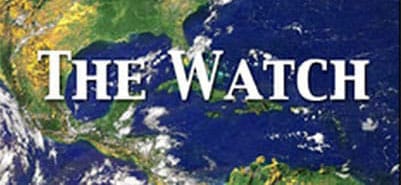Can the World’s Carbon Dioxide Be Stopped Short of Doubling
NOAA has developed a national energy simulator that using highly detailed weather and electric load data to determine the role that different energy sources could play in the coming decades. This “energy system simulator” uses coal, nuclear, wind, solar, etc., over the continental Unites States, and includes a potential national High-Voltage-Direct-Current (HVDC) transmission network, allowing power to be shared over the domain. The simulator identifies cost-minimized geographic configurations of power plants that could continuously and reliably supply electricity over all parts of the country.
The study shows that there are many paths to lowering carbon emissions, but approaches that achieve electric costs comparable to today and large carbon emission reductions are quite limited. Those involving existing small load sharing areas or large increases in storage would significantly increase the cost of electric energy. Without large-domain transmission, the rapid reductions needed in carbon dioxide emissions will not be feasible. A 2030 simulation that limits carbon emission intensity to levels found in today’s natural gas power plants, and includes a national HVDC network, would lower US electric sector emissions by up to 80%, maintaining costs at about the same levels as today. The transportation and heating and air conditioning sectors will also need to have much higher levels of electric usage to realize the full potential of decarbonizing energy. Our studies show that this approach is feasible for the major world carbon emitters, including the US, China and Europe. There is a potential path to transforming the global energy system to much lower carbon emissions by the 2030s without major economic harm.

Dr. Alexander E. “Sandy” MacDonald most recently served as the Director of NOAA’s Earth System Research Laboratory (ESRL) in Boulder, CO, and the Chief Science Advisor for NOAA Oceanic and Atmospheric Research (OAR). Like many meteorologists, he became interested in weather as a child, and spent his career in the field. His undergraduate degree was in Math and Physics at Montana State University. He started his professional career as an officer in the US Air Force, and then obtained a M.S. and Ph.D. in Meteorology from the University of Utah. He began working for NOAA in the National Weather Service Western Region Headquarters in Salt Lake City in 1973. When the Program for Regional Observing and Forecasting was established in 1980, Dr. MacDonald led its advanced weather prediction development team. He subsequently was the first Director of NOAA’s Forecast Systems Laboratory (1988), and also the first Director of its Earth System Research Laboratory. From 2006 to the end of 2012 he was the Deputy Assistant Administrator of NOAA OAR.
The focus of his career has been to apply advances in science and technology toward the improvement of services. As a weather forecaster in the Air Force he was acutely aware of how important a weather forecast can be, and the many limitations of weather prediction. While at the University of Utah, he developed his first weather prediction model, and became fascinated with the potential of computers and information technology to improve geophysical prediction.
He has been a leader in many important areas of research and development. He led the team that developed the advanced weather information system, has pushed for new observing technologies such as Unmanned Aircraft Systems, and has published extensively in advanced weather prediction modeling. He has published important policy relevant discussion of the dangers of regional climate change. He is the inventor of Science On a Sphere, a display system that is in about hundreds of museums and other institutions around the world, educating people of all ages about earth science.
Education
Webinar Archives Education ResourcesStewardship
Supporting Stewardship Past Projects Focus Area Resources Applying for Funding
Search Education
Get Social
Last updated: 06/16/24
Author: NOAA
How to cite this article
